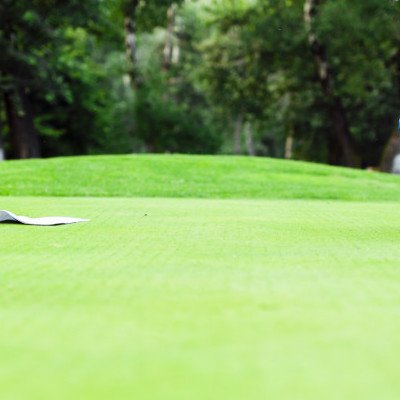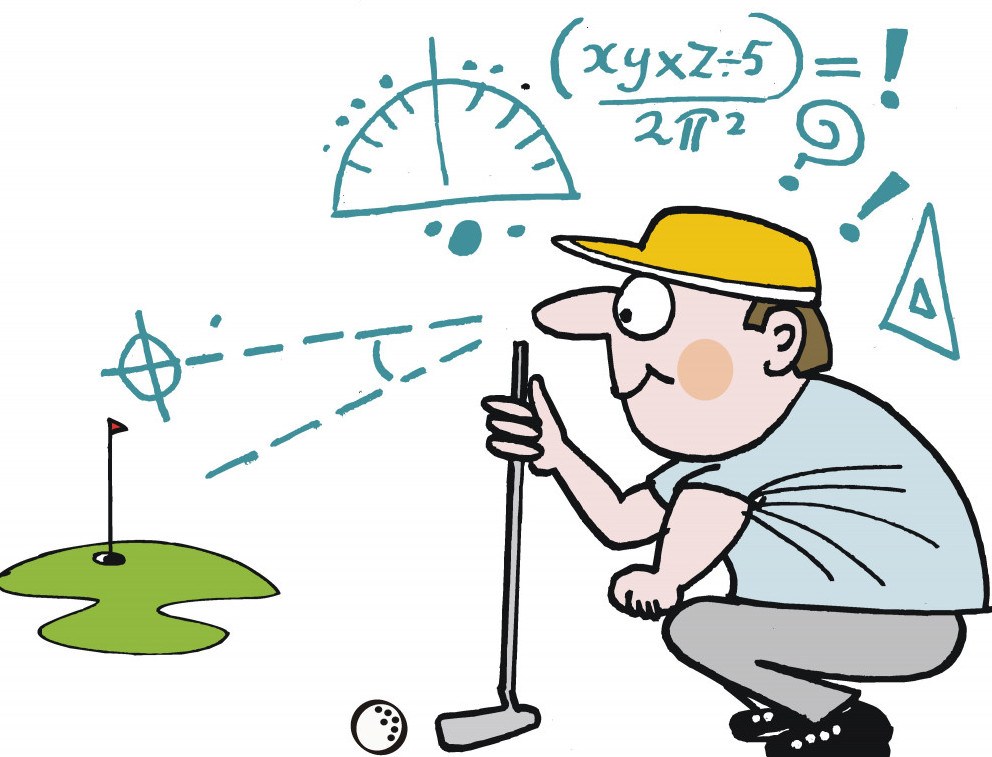My last article about a potential new practice net has got me thinking. At the end of that article, I mentioned what I thought might be the ultimate golf home practice set up. Now, this was little more than thinking aloud, but what if I were to go all-in and really create the best at home golf experience possible? Just how good could i make it?
This article contains Affiliate links
The Ultimate Golf Home Practice Set Up: 3 Possibilities
Of course, this question is going to be budget dependent so after a bit of thought, some trawling through reviews and online retailers, I have come up with three different options. Hopefully there will will something for everyone here that should let you work on your game even when you don’t have time to hit the course. For the three complete set ups, I have tried to get as much in as possible, but even if you are looking for just one single piece of kit you should hopefully find something here. If you do try any of this stuff out, or better yet you have already got an amazing home golf set up, please reply (and remember to include some pics to make the rest of us jealous!)

Option 1: The budget golfer
First things first-budget doesn’t mean poor quality here. In fact, there are plenty of ways to practice at home without spending a fortune. However, the absolute cheapest options do often have serious flaws. For example, try a cheap practice net and enjoy how the balls fly through and over the neighbour’s fence. Of what about a budget putting mat that is so far away from a real green that it makes your putting worse? (true story by the way!)
That said, you can certainly get a solid practice set up for less than the cost of a new set of irons, and probably less than the latest driver too.
So what stuff should we be looking at? Ideally, I want to be able to get some meaningful practice in all areas of my game from putter to driver. To make this useful, I would also like to be able to get some data. I mean it is fine when I can see the ball roll in to the cup (or not!) when I’m putting, but without some sort of measurable data, knowing if I am improving or simply grooving a horrible swing can be a problem when hitting into a net. It doesn’t make it useless (I can still tell if something is fat, thin on the toe or whatever) but it can make it tough to know the difference between a middled shot on a horrible out to in swing (which might ‘feel’ great) and a the same centre contact on a more neutral path (and that fabled baby draw.) Both are middled and are going to feel the same but one is disappearing OB right on the course!
However, once more, this isn’t an ‘all or nothing’ set up. Get what you like/want/can afford and maybe make it a project to complete the set of a year or two.
So what do we need? A putting mat, something for chipping and a full swing solution cover our bases. In fact, if you don’t want to get a putting mat and have a hall carpet, you can actually practice pretty well with the first gadget on the list.
The Puttout Putting Trainer
As I mentioned previously, when I first saw people mentioning this particular piece of plastic, I wrote it off as a waste of space. It just seems like a gimmick. And surely at that price, it isn’t going to actually make a difference, is it? And then a few people I know and a couple more who I don’t but who are generally trustworthy started talking it up. After watching one particular LPGA pro practising with the putt out, I realised that it really is a pretty cool piece of kit.
Essentially, it is a sort of curved slope with an indent just big enough for a golf ball near the top. You putt towards it and the ball will only stay in the cup at just the right combination of line and speed. It sounds so simple and yet it really works. As long at the putting surface is relatively true, the is no way you can’t improve with this thing. It takes up literally no space, costs very little and actually works. How good is that?
Find the Puttout on Amazon Here
A Basic Putting Mat
If you want to get the most out of something like the puttout, it is worth investing in a putting mat, simply because it is an easy way to recreate the feel of putting on grass. If you putt on a carpet,lino or whatever, the problem is that this can be miles away from what you will experience on the course. For example, I sometimes practise putting on a wooden floor. sure, this makes me feel like I am at Augusta, but it really is nothing like the super-slow greens I experience at my home course. Actually, you could simply use an old off-cut of carpet or rug if you want the most basic option possible. I have done this in the past and it will work, at least letting you work on your stroke. However, it wouldn’t be my number one choice, even on a shoestring. The ball won’t roll anything like on grass really and does tend to bobble quite a bit too.

Luckily a reasonable putting mat is a pretty low-budget solution. If you looking for a cheap option, I wouldn’t spend weeks wondering about which one to get either. Something like this SKLZ one on amazon would be fine.
Hitting Full Shots
So that’s putting sorted, but what about the rest of your game? This is where budget can be a problem, depending on your personal situation. For example, if you have a convenient field nearby, chipping, pitching and maybe even full shots shouldn’t be a problem. But what if you only have a small garden? Or maybe (like me) you live in a flat (apartment for my non-English readers:) ) I am lucky enough to have enough space and ceiling height to take full swings indoors, but that isn’t really the issue. I would be more concerned about seeing a ball heading through the tv screen as it goes straight through my low cost hitting net! The easy answer is to get a better net. Of course, our budget option then becomes something else.
The best bet for me is a combination of limited flight balls and a chipping net. As tempting as it might be to smash a driver in the living room, that story is never going to end well unless you have a really good net. there are a few good options in limited flight balls. I would avoid the old style wiffle balle or the foam balls, simply because they don’t feel anything like a real golf ball and feel is important when you are chipping. Here are two to try (both from Amazon):
Both of these should avoid that awkward conversation with your wife explaining why her mother’s ‘priceless’ vase is now held together with tape!
A basic chipping net makes things even safer and lets you get at least a half swing indoors too.
Pros: You really can do a bit of everything without needing either a lot of space or a lot of cash. This isn’t just going through the motions either-it will actually make a difference to your game when you hit the course.
Cons: This isn’t perfect. You won’t be hitting real balls, there isn’t any feedback on the ball or clubhead data from a launch monitor, you can’t vary green speed/slope (although this is an issue regardless of budget.) Most of this is details though. If you can’t get to the course, this will scratch that golfing itch pretty well.
Option 2: The complete set up (within reason)
Even if you do want to get most things from the first option, there are perhaps a few arguments that could tempt you into upgrading, at least for on or two things. Getting all the stuff on this list isn’t going to be as cheap, but it is going to pay off over a season or two compared to getting access to similar equipment in a teaching studio or golf shop for example. In fact, when you take into consideration range balls, getting to the course/range, simulator time and maybe even the value of cutting shots off your score, this could be one of the best investments possible for your game.
The basic set up here isn’t going to be hugely different to our first level. After all, you still need to practise everything from putting to full swing. The difference is going to be in the quality of the individual parts as well as what you could add in terms of swing feedback through a launch monitor or similar. Whilst this version (or at least parts of it) can work well in the living room, I see this as being the ideal basement/man cave or garage set up. If you have a dedicated area, this could be an awesome way to spend a few hours a week and make some really good progress on your game.
Starting from the short game and working out, the first stop is going to be a putting green. As above, I think the putt out is worth getting, regardless of budget. It seems to me to be a really clever (and cheap) way of working on both pace control and direction and can also fit in your golf bag and go with you to the course.
Of course, if you want to get the most out of it at home you are going to need a putting mat. As I have written before n this blog, the big moss range is really very good. You can go beyond simply putting along a thin strip. This is important because it is actually easier to putt when you are on something that is only a couple of feet wide. The edges work as guidelines, something that unfortunately, we don’t have at all on the course! Big Moss and similar products are more like a miniature putting green where you can pick your own line, making it far more realistic. You don’t need a huge amount of space to use these things either and as with most mats, you could just roll it up and put it in a cupboard when you are done.
A Solid Hitting Net
The next step is getting some half and full swings in. I like two different models here. firstly, the Rukket Practice Net is a solid choice. I don’t know if I would swing a driver at it in front of the telly (but who does that anyway, right?) but I would be pretty happy hitting irons at it unless I was trying to swing out of my shoes. If you have got this set up in a garage where not a lot can go wrong then you can probably swing away with any club in the bag too.
If you are looking for something a little more complete then look no further than the Net Return. If you read my review, you will see that this is really a great hitting net for home use.
One thing that people often forget when building a home practice area is what are you hitting off? Th old ‘I will just use a bit of carpet’ is actually a terrible idea. I used to do this and in my experience it is a fast track to elbow pain and really doesn’t tell you much about how you are hitting the ball at all. If possible, I would always choose to hit off real grass. If you have a good quality net and a bit of grass outside, set the net up there. Unfortunately many (including me) don’t actually have a garden and even if you do, nobody wants to be hitting thins outside when the temperature is close to zero, do they?
A Hitting Mat to Improve Strike
This is when you want to invest in a hitting mat. Once more, don’t go cheap on this! A thin piece of artificial turf on a concrete garage floor is nobody’s friend, trust me. A quality mat will save your elbows as well as letting you know if you are hitting it fat or thin, something that tends to be hidden when using a thin/hard hitting surface. There are a few pretty good options out there, but something like the This Forb Golf Range mat on Amazon fits the bill very well. It has longer fibres that are far closer to playing on grass than your usual cheap mat. This means that you know if you fatted it rather than having the club skid into the back of the ball.
This isn’t actually just about injury prevention though. If you regularly hit balls off a hard surface, you will actually adjust your swing. Rather than hitting down and compressing the ball as you should, you will subconsciously try to ‘pick’ the ball to avoid that jarring contact with the ground. This is really the opposite of what we want to ingrain as a swing pattern and is going to be very tough to undo on the course.
Picking a Launch Monitor
The final piece in this puzzle is the launch monitor. Although it would be great to have a trackman or GC quad (and more on this later) you don’t need to have a 5 figure budget to get some numbers on your swing. In fact, there are some amazing gadgets that will do the same thing (at least up to a point) for just a few hundred dollars/pounds. One such option is the Voice Caddy SC200.
Find the Voice Caddy SC200 Launch Monitor on Amazon Here
This handy portable device is packed full of information on your golf swing that will make practice measurable and thus allow the average golfer to make measurable improvement. As we all know, hitting balls into a net deprives us of a lot of information. We can generally feel when strike is good or bad (although even this is going to depend on what type of club you are actually hitting) but that isn’t actually all that useful. I mean, what about the ball flight?
As an example, I am currently trying out candidates for the 200 yard spot in my bag. I am hesitating (again) between hybrid, long iron, driving iron and fairway wood. I was on the range with a possible hybrid this week. I hit quite a few balls with this particular model and honestly felt like I was hitting them pretty well. If I had been hitting into a net, this club might well have been going into the bag. It felt good and sounded good. However, the ball flight was odd. It tended to balloon and drift off to the right (not my usual miss with a hybrid.) Numbers showed for some reason that I was leaving the face open with this particular club. Without real, concrete feedback, how would I have know this?
So what exactly does the voice caddy SC tells us? Here’s a list:
- Ball speed
- swing speed
- smash factor
- carry
It also lets you play some games to work on hitting a particular distance. All this feedback is given via voice output which makes it easy to use and fun.
Getting Clubhead Data
You might notice that some important things are missing here though. What about clubhead data? This brings us back to the higher-level options. Gathering clubhead data relies on things like multiple high-speed cameras which are going to make for a significantly more expensive unit. for out level two option, getting carry distance and smash factor is already enough data to make some serious progress. For example, there are more and more studies showing the correlation between distance and score. If you can hit it longer, there is a decent possibility of shooting lower scores. Getting feedback every swing from a launch monitor is several steps beyond ‘I really smashed that one!’
Obviously cost is always going to be a factor, but maybe getting this a piece at a time and especially setting it against the cost of range balls, travel etc might give you an idea of just how affordable it could be.
Pros: You are getting the complet golfing workout here from tee to green, including data that will give feedback to actually help improve the swing.
Cons: Not much really. Cost does come into the equation, but once again, when you set this next to range balls, petrol/travel costs etc, it might not be quite as out of reach as you think.The only other negative thing that I could say is that this set up might give you the taste for what comes next!
Option 3: The Sky’s the Limit!
It is nice to dream a little and the is especially true where golf is concerned. I mean, who wouldn’t want to play Augusta with a set of hand-ground Miura irons in the company of Woods and McIlroy? My third option is more top-end and certain things on here come with a price tag. I have included the dream option just to make you dribble a bit, but in most cases there is also something that could have its place in a home golf practice area.
A quick note though-the options here aren’t necessarily the most expensive possible. give me a blank cheque and I could certainly spend more:) However, I think you would struggle to get a better set up than this.
The Best in Putting
As I have said many times (and others have said far better than me) practising putting is a good idea! Whilst I certainly don’t believe at all in the old ‘Drive for show, putt for dough” thing (because modern statistics like strokes gained show this to be a fallacy) you should take this a pretext for abandoning work on the greens. Getting better at putting has all sorts of good effects on game in my opinion.
To me the biggest one is enjoyment. I really hate playing golf when I spend a large proportion of my time on the greens hoping that I can get the first putt close enough to be a gimme. It puts stupid pressure on my wedges and irons because I feel I need to hit it close and I am not good enough to play like that.
When I have the opportunity to putt often (preferably daily) the whole game changes for me. Sure, I make a couple more putts (probably) but the rest of my game feels so much freer too. A long first putt? Don’t worry, trust the stoke and give it a roll. Believe me, this is a far better way to be when your are standing behind that first putt!
So what would be my practice green of choice? Well, it will certainly cost a little more, needs a bit of space (and installation) but getting Tour Greens to replace part of the lawn with a putting green would make me a happy man!
As for a hitting net, you don’t need to spend a fortune really. There are quite a few manufacturers that do really high quality nets that would be great next to that putting green.
High quality Launch Monitors
The way to really get the ultimate practice experience at home (and also blow through the rest of your cash) is to get a launch monitor that gives you all the information possible. You could start by looking at something like the optishot 2, which is a fun and actually somewhat affordable home option. Putting a screen linked to a laptop lets you play all the courses you dreamed of without leaving home.
After this, you can really go wild. what about a trackman or GCQuad? These are both amazing devices which will keep any golfing addict satisfied for life.
Hopefully, this gives you some idea of what is actually possible. Once more, having a budget of thousands (or tens of thousands) gives you some pretty incredible options, but for a few hundred dollars/euros/pounds, you can get something set up that will be both fun and help you work on your game.




